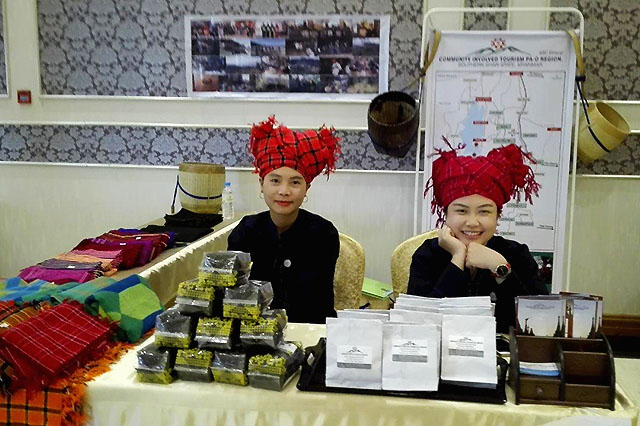Representatives of over 30 Myanmar Community Tourism Initiatives Update Progress and Share Experiences at 2nd National Conference

MCRB, Myanmar Responsible Tourism Initiative (MRTI) and Hanns Seidel Foundation (HSF) cohosted a second Communities and Tourism Conference in Naypyidaw on 13/14 June.
The first conference on communities and tourism was held in Naypyidaw in December 2015. The 2nd conference was attended by over 120 participants. These included existing community tourism projects, and new initiatives, tour companies, international experts and around 15 Members of Parliament (MPs) from areas where communities had expressed an interest in participating in tourism.
The conference was organised to promote learning from the successful projects in Myanmar which are already up and running, and inspire the development of new community tourism products, as well as to build links between them and their target markets. It was also intended to highlight the challenges faced by projects, including regulatory hurdles, skills gaps, and marketing. The opportunities and challenges of promoting tourism in areas affected by conflict were also touched on.
The agendas in English and Myanmar, press releases in English and Myanmar, and conference report in English are available for download:
Dr Nicole Haeusler, adviser to GIZ and Myanmar Responsible Tourism Institute explained that terminology such as Community Based Tourism (CBT) tended to involve projects in communities such as tours and overnight stays. However Community Involved Tourism (CIT) on which the Myanmar government adopted a policy in 2013 with the support of HSF, could be regarded as both CBT and communities producing items for the tourism supply chain, such as food, hotel furnishings and souvenirs. However whatever the term used, whether CIT or CBT, the most important factor for sustainable success was genuine community participation and entrepreneurship, and not a top-down approach.
As in the December 2015 conference, participants were polled on factors influencing success and failure of community tourism ventures. By far the most important factor identified as necessary for a community tourism project to be successful was ‘Community organization and management support’(39% up from 21% in 2015) followed by ‘Tourism product development according to the market needs’ (17% up from 14%).
As for causes of failure, the main one identified was a ‘Top-down approach by development partner and/or private sector partner in which the needs and ideas of the community are not taken into consideration’ (24% up from 17%) followed by ‘Lack of mobilisation and involvement of the community’ and ‘An unstable political situation’. These findings highlight the need for communities – or some members of them - to be interested in, and active in owning the tourism products they put on the market. The full polling results are available for download:
The six community tourism initiatives which presented at the first conference in December 2015 (Myaing, Indawgyi, Pa-O region, Kayah State, Upper Ayeyarwady dolphin project, and Thandaunggyi) spoke about their successful experiences of the last couple of years, some of them even winning international awards. However although they had all seen a growth in visitors, including Myanmar tourists, and some increases in community income from tourism, all faced challenges in marketing the product.
Other common challenges included continued restrictions on access and overnight stays by foreigners which reduced local earning potential, lack of skilled human resources and lack of local knowledge about what foreign tourists want and how they behave. All the projects highlighted the importance to the community tourism experience of promoting environmental awareness, and protecting and building pride in and knowledge of local culture which was particularly interesting to foreign visitors. The importance of the growing Asian tourist market was highlighted, as well as domestic visitors.
Participants also expressed optimism about Myanmar’s potential for community based tourism in many tourism destinations in Myanmar. New destinations and products discussed at the conference included Myeik archipelago and Lampi Island, trekking in Danu regions in Shan State, Ngayokekaung, Gwa, tours in the Yangon area, Tamarind Lake Village near Sale, and Bagan area.
The conference also discussed updates on marketing and technology which could be used to promote community tourism, as well as networking initiatives and Facebook pages which had been launched since the last conference, to help initiatives share their experience and skills. Also presented were a number of products from crafts and souvenir enterprises through panel discussion and stalls. These included crafts from producers for HlaDay and Pomelo, the Turquoise Mountain Jewellery Project, souvenirs from the Pa-O community, YK designs souvenir tea, bamboo products from near Inle Lake, books from the Third Story Project, and ChutChut’s recycled plastic items.
 English
English မြန်မာ
မြန်မာ မြန်မာ (unicode)
မြန်မာ (unicode)












